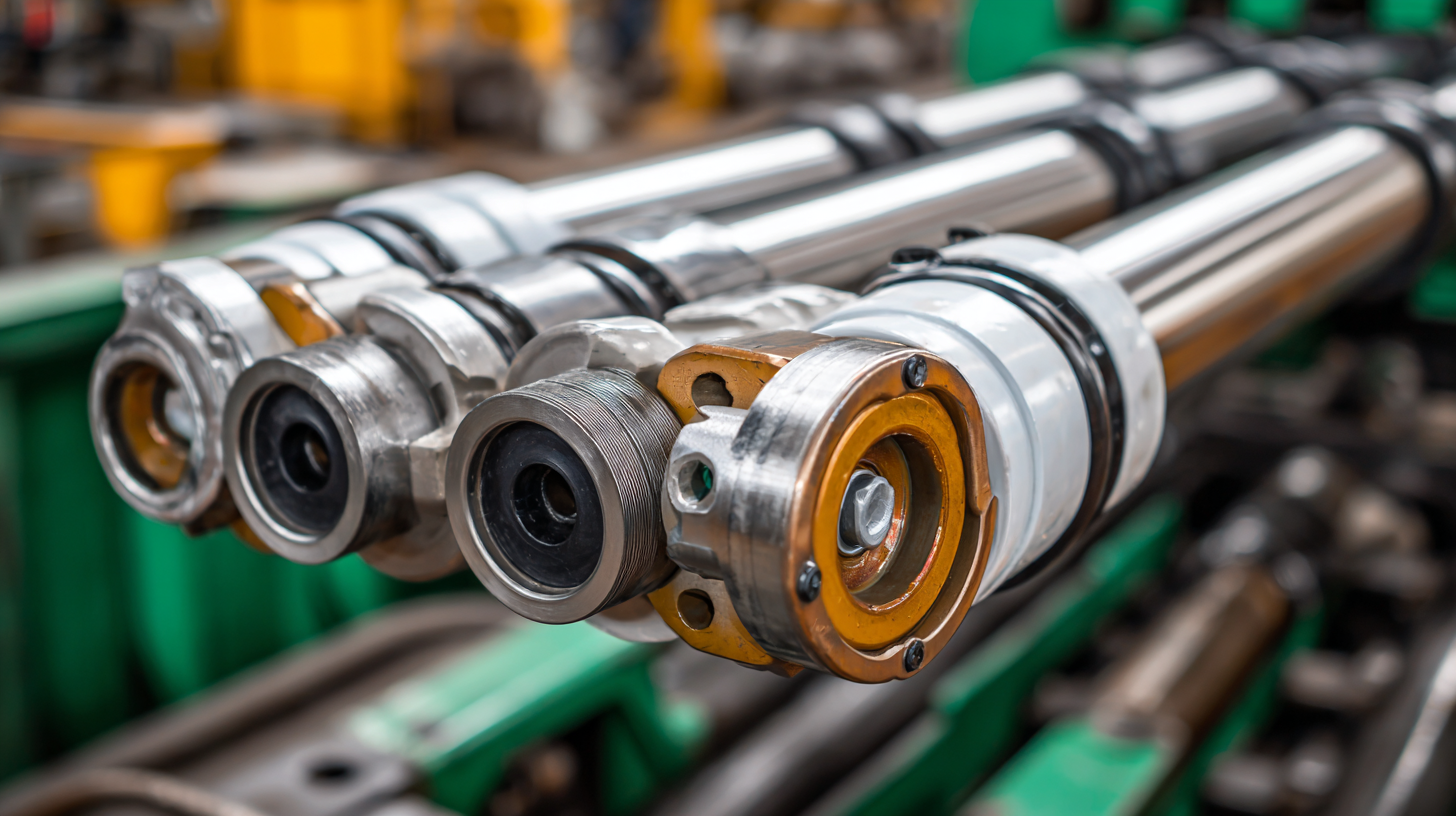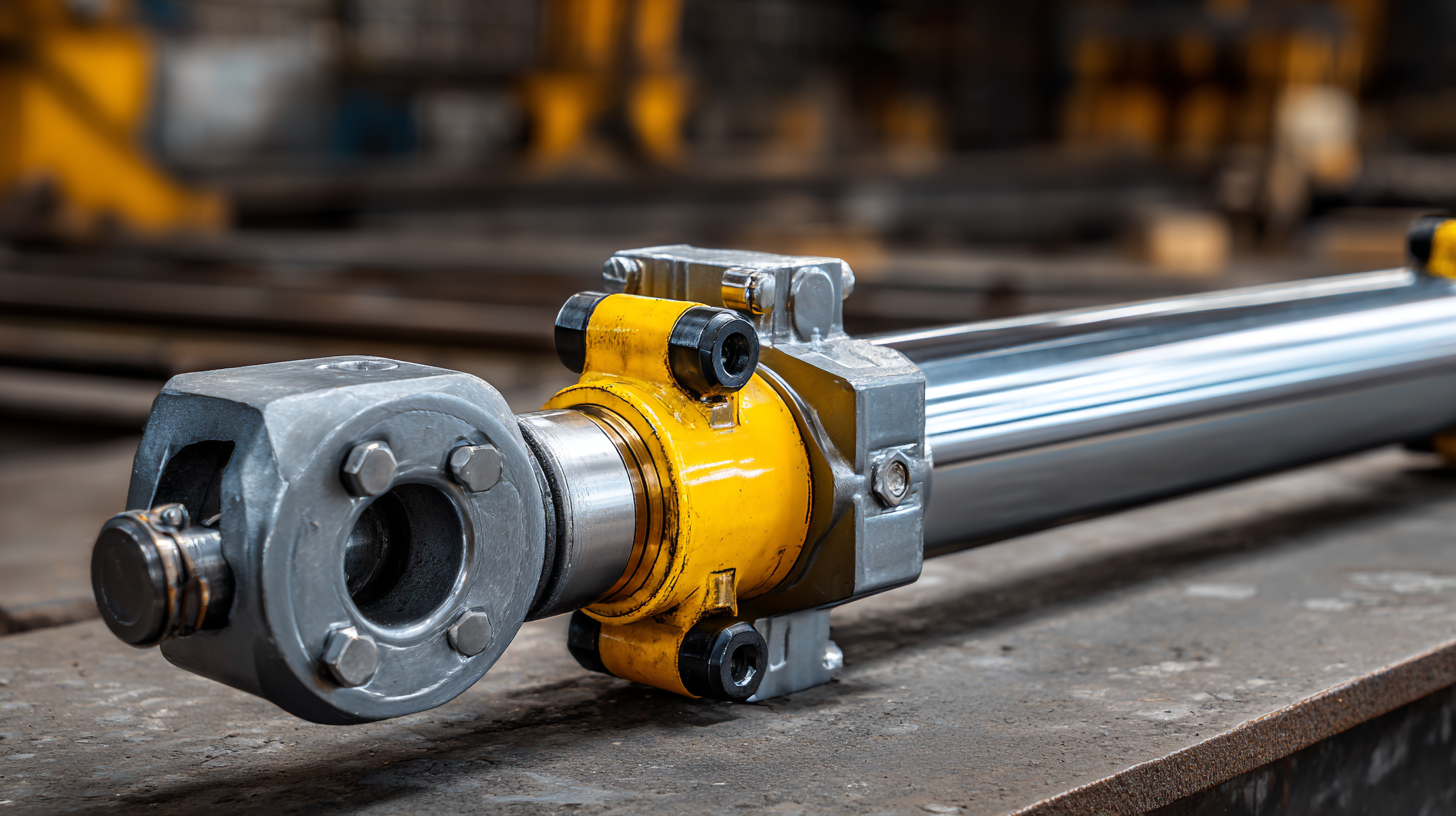Empowering Engineering Excellence: Innovate, Elevate, Deliver.
In the realm of industrial automation and machinery, the choice of components directly impacts operational efficiency and productivity. Among these vital components, the Double Acting Hydraulic Cylinder stands out, offering significant advantages in force generation and versatility. According to recent industry reports, the global hydraulic cylinder market is projected to reach USD 11.92 billion by 2026, with Double Acting Hydraulic Cylinders accounting for a substantial share due to their ability to provide powerful linear motion in both extension and retraction. This capability makes them indispensable in applications ranging from construction equipment to manufacturing systems. Understanding the various standards, types, and performance metrics associated with Double Acting Hydraulic Cylinders is crucial for professionals seeking to optimize their equipment and ensure compliance with industry production standards. This comprehensive guide aims to illuminate the intricacies of choosing the best Double Acting Hydraulic Cylinders, providing valuable insights and key data to inform decision-making processes.

When selecting the best double acting hydraulic cylinders, it is crucial to consider the various types of hydraulic cylinder alternatives available and their specific applications. Pneumatic cylinders, for instance, use compressed air to create movement and are often favored for lighter loads and faster cycle times. Their ability to operate in environments requiring clean and dry conditions makes them ideal for industries such as packaging and food processing, where contamination could be an issue.
Another alternative worth noting is electric actuators, which are increasingly replacing traditional hydraulic systems in certain applications. With advancements in technology, electric actuators offer precision control, energy efficiency, and reduced maintenance requirements. This shift is evident as industries seek to minimize their carbon footprint and enhance operational efficiency. Understanding these alternatives allows operators to make informed decisions based on their specific application needs, ensuring optimal performance and cost-effectiveness in their hydraulic systems.

In the realm of hydraulic systems, telescopic cylinders are gaining prominence as a viable alternative, especially in space-constrained environments. These cylinders utilize a series of nested tubes to achieve significant extension while maintaining a compact size when retracted. According to the Fluid Power Journal, the demand for telescopic cylinders has surged by approximately 20% in recent years, driven largely by industries such as construction and sanitation, where space is at a premium and performance cannot be compromised.
A key advantage of telescopic cylinders is their ability to exert maximum force with minimum space. For example, they can deliver a stroke of up to 29 feet while only requiring 5 feet of installation space. This efficient design optimizes the machinery footprint, significantly enhancing operational efficiency. When selecting a telescopic cylinder, it is crucial to consider parameters such as load capacity and retraction speed to ensure compatibility with your specific application.
Tips: When installing telescopic cylinders, always ensure proper alignment to avoid premature wear or failure. Regular maintenance checks are critical to monitor for hydraulic fluid leaks, which can significantly affect performance. Additionally, analyze the environment where the cylinders will be used to select materials that resist corrosion and wear, thereby extending the lifespan of your hydraulic systems.
When choosing between double acting and single acting hydraulic cylinders, efficiency stands at the forefront of the decision-making process.
 Double acting cylinders enable fluid to enter and exit from both sides of the piston, allowing for force to be exerted in both extension and retraction. This dual functionality means that they can handle heavier loads and provide more consistent power throughout the entire stroke. In applications that require rapid and continuous movement, double acting cylinders shine by reducing cycle times and increasing overall productivity.
Double acting cylinders enable fluid to enter and exit from both sides of the piston, allowing for force to be exerted in both extension and retraction. This dual functionality means that they can handle heavier loads and provide more consistent power throughout the entire stroke. In applications that require rapid and continuous movement, double acting cylinders shine by reducing cycle times and increasing overall productivity.
On the other hand, single acting cylinders operate by using hydraulic pressure for one direction only, relying on gravity or an external force for the return stroke. While they may be simpler and often less expensive, single acting cylinders can limit efficiency, especially in heavy-duty applications. In situations where space and weight are considerations, single acting cylinders might be favored; however, their operational constraints can result in slower cycles and reduced throughput. Ultimately, the choice hinges on the specific needs of the application, balancing cost-effectiveness with the desired efficiency and performance.
When evaluating the efficiency of actuation technologies, pneumatic cylinders often emerge as a superior choice compared to hydraulic alternatives. According to a recent industry report from TechNavio, the global pneumatic cylinder market is projected to grow at a CAGR of 5.3% between 2021 and 2025, reflecting increased adoption across various sectors, particularly in automation and material handling. This growth can be attributed to the inherent advantages of pneumatic systems, such as their lighter weight, faster operation speeds, and lower maintenance costs compared to hydraulic cylinders.
Moreover, pneumatic cylinders exhibit a unique flexibility in their application, making them suitable for a wide range of tasks. A study by MarketsandMarkets indicates that pneumatic actuators can deliver a force range of 10 to 250 psi, allowing for precise control and operation in environments that require rapid cycling and adaptability. Additionally, pneumatic systems operate without the risk of fluid spills, which is a common concern in hydraulic systems, thus ensuring a cleaner and safer workplace. Ultimately, these advantages highlight why many industries are increasingly favoring pneumatic cylinders over hydraulic alternatives for their actuation needs.
As the landscape of power transmission continues to evolve, the choice between traditional hydraulic cylinders and newer electric actuators becomes increasingly relevant—especially in contexts where efficiency and environmental impact are paramount. Electric actuators offer a range of benefits, including enhanced precision and lower energy consumption. These advancements are pushing the boundaries of application potential, making them suitable alternatives to hydraulic systems in many sectors, from construction machinery to automated processes.
Hydraulic actuators are often associated with powerful performance; however, they can incur significant energy losses. Transitioning to electric actuation has shown promise in improving overall machine efficiency and reducing operational costs. The latest electric options, such as linear actuators, continue to develop with greater integration and strength, challenging the long-standing reliance on fluid power. Moreover, innovations like electrohydrostatic technology reflect a hybrid approach, combining the high force capabilities of hydraulics with the energy efficiency of electric systems. This shift could signal a transformative era, encouraging industries to weigh the cost-benefit considerations carefully when selecting actuation technologies.
| Dimension | Hydraulic Cylinder Price (USD) | Electric Actuator Price (USD) | Force Capacity (kN) | Cycle Rate (cycles/min) | Efficiency (%) |
|---|---|---|---|---|---|
| 50x100 mm | $150 | $250 | 5.0 | 30 | 85 |
| 70x150 mm | $200 | $350 | 10.0 | 25 | 80 |
| 100x200 mm | $300 | $600 | 20.0 | 20 | 75 |
| 150x300 mm | $500 | $900 | 40.0 | 15 | 70 |